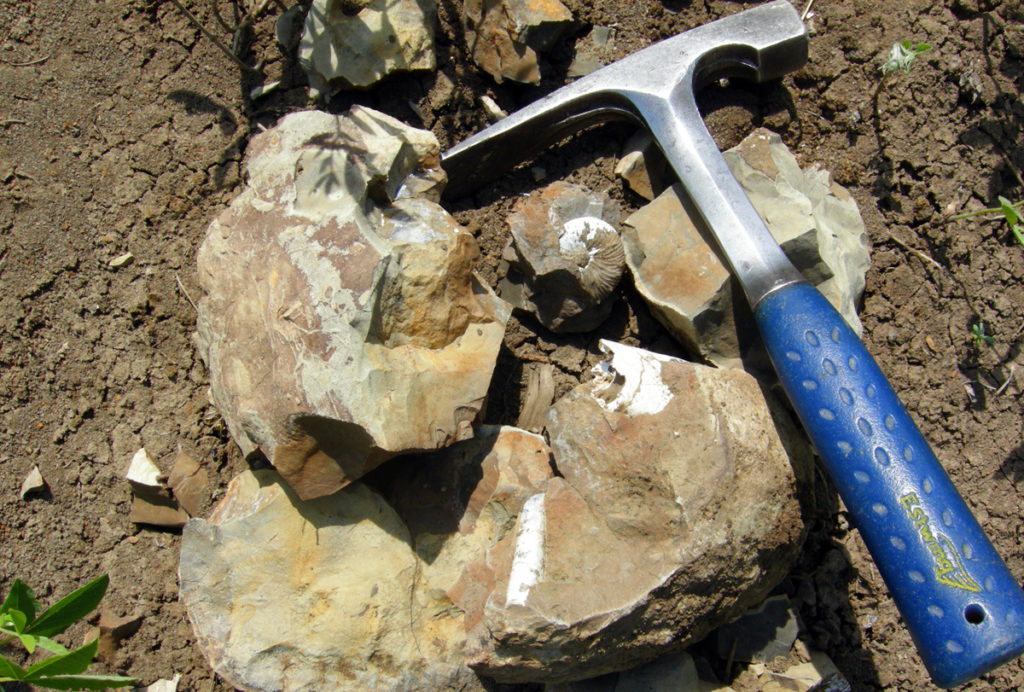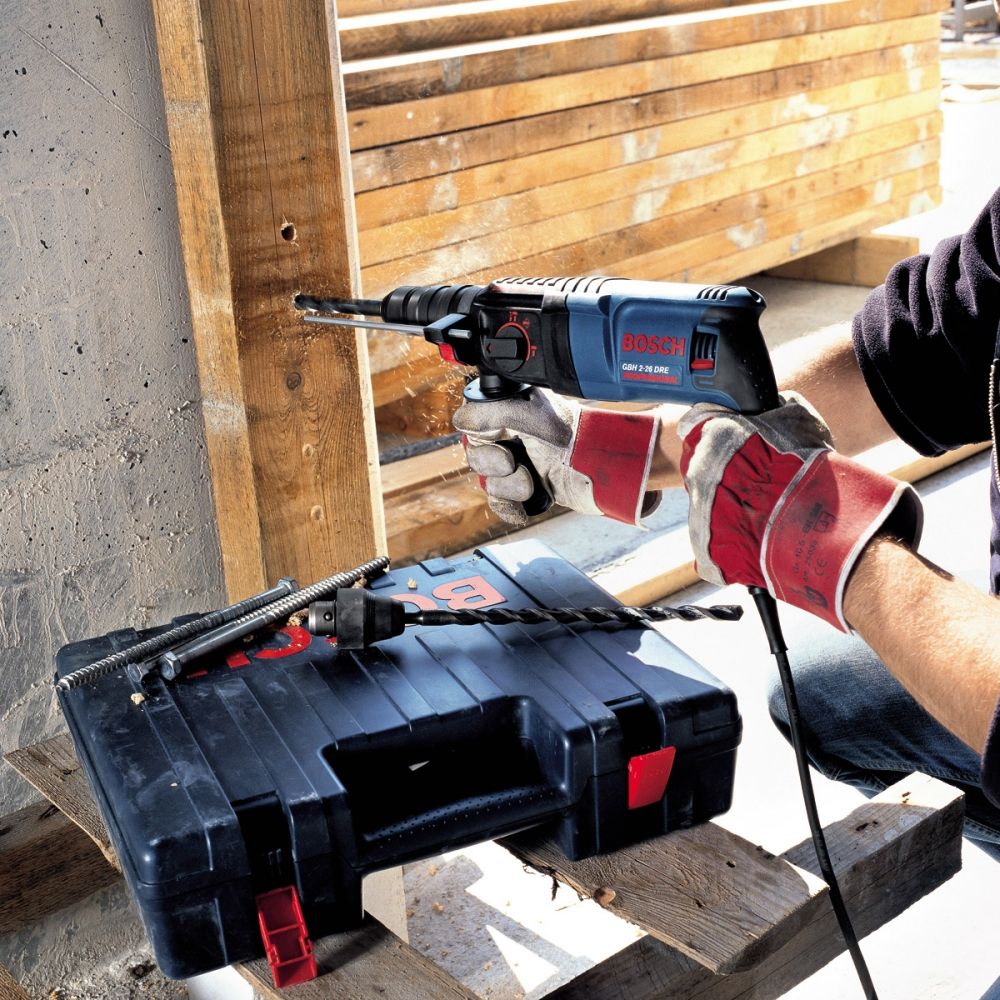Rating of the best geological hammers for 2025

An important tool for a geologist, designed to study rock, is a special hammer. With its help, the found and selected minerals are split in order to carry out their more complete diagnostics and research. For these operations, it is extremely important for the research scientist to observe the pattern of a fresh chip and the details of the resulting fracture in the mineral structure. Getting a chipped with a hammer, you can fully appreciate the internal texture of the stone and establish the real color of the rock (after all, the outside of the mineral can be covered with strong contaminants and oxides, i.e., the so-called "geological jacket").

Content [Hide]
Geological hammers - general information
Their traditional shape is represented as a slightly curved and elongated bird's beak with a square striker end. Weight can vary from 600 to 1200 grams. One-piece forging models are considered the most popular, rather than those that have a separable design. In the latter, the handle can generally be made of wood, which indicates a short period of its operation. Nevertheless, for any models it is characteristic that the working handle does not exceed a length of 40 centimeters, because it is this value that is considered optimal for working in hard-to-reach places.
Homemade monolithic samples
Some geologists prefer to make such a tool themselves. Most often, homemade products are monolithic variations, forged from steel of increased hardness and with good impact toughness. The whole process is best carried out in a factory forge and using automated tools (press, auto-hammer, etc.), because if old manual technologies are used, the final product may turn out to be fragile and will not be suitable for working with hard rock.When making your own tool, you should adhere to some basic points:
- The eye for the handle is located exclusively in the center of gravity with a mandatory expansion of 3-4 millimeters;
- The striker should have a length of 180 millimeters with a height and width of 25 * 25 millimeters, while having clear and sharp edges;
- The width of the key should be from 12 to 15 millimeters, it should have well-sharpened edges, so that it is convenient to break off pieces of the desired shape and size with them;
- The standard overall hardness should be 50-52 Rockwell units and should not be scratched even with a coarse-grained file.
Features of the manufacture of handles for prefabricated models
If the choice is made in favor of prefabricated models of the instrument in question, then their handle, as a rule, is made of viscous wood:
- Maple;
- Dogwood;
- Birch;
- Rowan.
The factory manufacturing process is carried out according to the workpiece, which has a length of two or three standard handles. Drying of the workpiece occurs at room temperature without removing the bark and lasts from two weeks to a month. Then, an oval-shaped sample with dimensions of 12 * 30 millimeters is cut out of the workpiece. The upper end of the workpiece is sawn to the shape of a cone, so that it is easier to put a striker on it. The protruding part, in which an eye was made in advance, is cut flush. If cracks form when the striker is mounted, the handle is considered defective and cannot be used. For protection, as well as for a comfortable grip and hold during operation, the final product is provided with a special bandage.
Head shape features
Like any hammer, the one under consideration has two working heads (i.e. endings), one on each side.Usually, there is a flat square head on one side, and some kind of pick or chisel on the other. Functionally, this part of the tool is intended for the following actions:
- The chisel is used to remove loose deposits from rock (or overgrown moss) and also to expose rock by digging. Sometimes it is allowed to open cracks with a chisel. It can also be used to break open minerals that are not particularly hard, such as mica or schist, to reveal underlying fossils.
- The edge or angle of the flat head is designed to strike the rock to split it. They can also carefully cut off small sharp corners from the stone in order to reduce the extracted geological sample in size.
- If one of the sides of the head is made in the form of a sharp pick, then it is convenient for it to carry out more thorough point work. Such a model of a geological hammer is already called a rock or prospecting one, which implies a deeper geological exploration inside the mountain range.
Technical Standards and Parameters for Geological Hammer
Among professional exploration geologists, it is believed that the effectiveness of a hammer, by and large, will depend on the length of the working handle and the weight of its head. The mass of the latter can vary from 230 grams (models designed for everyday work on a small scale) and up to 1.8 kilograms (such a hammer is used in deep field reconnaissance). The most useful and common models are considered to be tools with a total mass of up to 1.2 kilograms, although they are not very suitable for working on ancient igneous or metamorphic rocks, which will require heavy and powerful blows. Although it is possible to work with such breeds, it is not very productive.If he uses a device of a small size, then a mallet or a "mason's club" is used to strengthen the blow to it.
As mentioned above, the most durable and strong models are monolithic, which are made from a blank of solid hardened steel. Nevertheless, their increased strength extremely affects their cost, which is several times higher than that of collapsible models, for example, with a wooden handle. In any case, each model of a geological hammer must be selected depending on the scale and conditions of future work - for simple actions performed exclusively for scientific research (i.e. we are not talking about applied geological exploration), a simple product with low weight will be quite sufficient and simple head shape.
Specificity of Russian samples of geological hammers
In the expanses of the former USSR, three basic forms of geological hammers were used, which were produced exclusively under state control:
- TYPE "A" - was used for hard igneous rocks and was characterized by special power and heaviness;
- TYPE "B" - intended for consolidated sedimentary minerals (some kind of "golden mean");
- TYPE "B" - used for light work with loose sedimentary rocks.
The second type (“B”) was considered the most common and was often even depicted on the emblems of some northern, Ural and Siberian cities, where geological exploration became the impetus for the founding of settlements. The main difference of this product is the presence of a powerful "beak", which can be used for deep entry into the rock.Soviet designers quite justifiably believed that a geological tool should have an elongated handle - in extreme cases it was even supposed to be used as a cane when climbing a hill. However, practice has shown that an excessively long handle is extremely inconvenient when carrying out concentrated and targeted strikes. Moreover, the technological process of domestic factory production of even monolithic models did not shine with special quality - often the product was very poorly balanced, which made difficult work even without that difficult.
But if we talk about type "A", then better materials were used for its production, which increased its durability and working comfort. There have even been cases of non-standard models made with a curved handle, which is somewhat reminiscent of today's ice axes in shape. It was simply impossible for a simple field industrial geologist to find these models and they were supplied exclusively to large research institutes. Such variations were issued mainly by the heads of scientific geological parties. Nevertheless, type "A" can be called universal, given its use only for research work.
If we talk about the metal that was used to create the working head, then the users did not have any special questions about it, because both for the combined and for the monolithic model, dense and good metal served as a source. But this state of affairs did not apply to the handles in any way, because they, especially for type “B” hammers, were made of wood in 90% of cases. Therefore, most professional users tried to replace the factory birch handle with a homemade beech one.The use of birch certainly reduced the overall cost of the tool, but a decent practitioner never left this option in his tool, determined by the state manufacturer, so to speak, “by default”.
In spite of everything, it is worth paying tribute to the ingenuity of Soviet designers at the factories. At one time, there was also the B-1 type, which had a large amount of application. The thing is that for such devices, the wooden handle could be removed from the head and used as a fixing peg when setting up a camping tent. Such use was considered very convenient when long-term expeditions were supposed to be carried out in the conditions of bare steppes. Wooden stakes went in quite well and firmly held the fasteners of the tent on the ground of an average level of freezing and hardness.
Today's Russian industry produces the type of tools in question with much higher quality. More durable steel grades are also being used, the tradition continues to make the hammer a more versatile device, giving it a larger scope, while the price of these products does not seem so high anymore. Even collapsible structures can be both with a wooden and a metal handle, while maintaining the full functionality of each for its segment of work.
The specificity of Western samples of geological hammers
Due to the fact that the former Western market did not have a single center for standardizing the geological instrument, each country produced it according to its own templates (meaning the times of the existence of the USSR and approximately before the creation of the European Union). In any case, their production was initially focused on the production of predominantly monolithic models from high quality materials.Even if today we use those foreign obsolete samples, they will show themselves equally well when working on almost any breed:
- Peridotites and farts;
- Isotropic gabbro ophiolites;
- Diabuzz forces;
- Spherical lava basalts.
IMPORTANT! Specifically, American models were specially made for work in Alaska, where the landscape is much similar to our Kamchatka, so it was a great joy for a Kamchatka geologist to get hold of an American hammer.
In North America, the leader in the production of this toolkit was Ernest Estwing, who began producing similar products as early as 1923. Its model range consisted of much more than the three Soviet standard types. This company even produced heavy-duty samples, like a sledgehammer (but in limited quantities), which were positioned as the best products for splitting especially strong and large minerals. However, this was just a marketing ploy, and such sledgehammers did not bring any practical benefit in geological matters. Even some modern models from Estwing suffer from the shortcomings of these giants, for example: during long work, the handle made of an all-metal rod beat off the master’s hand very much, even an elite leather lining did not save from this.
Today, both Russian and Western products, in relation to the tools under consideration, are trying to come to a common denominator, however, the first one does not shine with a variety of models, although it has a fairly affordable price, and the second offers a wide range of products, but at a far from low cost.
Rating of the best geological hammers for 2025
Budget segment
3rd place: "Estwing Burpee BP500"
votes 0
The length of the impact part of this product is about 24 cm.The hammer pike is forged from a single piece of steel, and its handle absorbs vibration from impacts. The tool was developed by professionals from the Burpee Museum of Natural History in Rockford, Illinois. On the shock part there are peaks on one side, a blade on the other, and three magnets are also located on it. The recommended cost for retail chains is 1520 rubles.

- Good value for money;
- Well-known manufacturer brand;
- Dual purpose.
- Not detected.
2nd place: "TAQ-673219R-N981062"
votes 0
This multifunctional tool can be used in both carpentry and geology. Made according to the design of a pointed mouth. The material of manufacture is hardened steel. Color - steel metallic. The recommended cost for retail chains is 1700 rubles.

- Durable manufacturing material;
- Multifunctionality;
- Rubber braided handle for a comfortable grip.
- Not detected.
1st place: "Estwing EO-14P"
votes 0
This product has a pointed impact edge. The tool itself is forged from a single piece of high-quality steel, and its vinyl handle perfectly absorbs vibration.
The length of the impact surface is 15.5 cm. Comfortable work on any type of minerals and rocks. The recommended cost for retail chains is 1878 rubles.

- Wide impact edge;
- Ability to work with different materials;
- Excellent vibration absorption.
- Not detected.
Middle price segment
3rd place: "SF-16UU4251"
votes 0
The sample guarantees 100% high quality work.Made from full carbon steel. The tool has a polished steel surface, durable to use, and the head and handle are forged in a single piece. The design is ergonomic, which corrects the muscular efforts of a person during work. Has a cushioned handle. It is possible not only to chip the stone, but also to first measure the hardness of the mineral. The tool is intended for paleontological and geological parties. Size - 28.5 * 17 centimeters. The recommended cost for retail chains is 2900 rubles.

- Additional sharpening of blunt edges is possible;
- Comfortable handle grip;
- Completely monolithic production.
- Not detected.
2nd place: "Estwing E13P peak"
votes 0
This example is made of solid steel with an anti-reflective matte black finish. The handle is made of genuine leather. When working, the presence of natural natural bumps and inclusions is allowed in the stone. The sharp edge will easily clean the rock from natural growth and loose sedimentary layers. The recommended cost for retail chains is 5600 rubles.

- Classic design;
- Handle protection - genuine leather;
- Particularly sharp lance edge.
- Somewhat overpriced.
1st place: "Geological Hammer Matrix"
votes 0
Another quality product from an American manufacturer. Designed for most geological work, regardless of the processed minerals. The handle is protected by a dense plastic and rubber case, perfectly held in the palm of your hand. The recommended cost for retail chains is 7200 rubles.

- Double protection of the handle;
- Multifunctionality;
- Good combination of weight and construction.
- Overcharge.
Premium class
3rd place: Geological sledge hammer Estwing E6-24CP
votes 0
This product is characterized by excellent double hardening. The powerful impact part and the handle of the hammer-sledgehammer are made from a single piece of forged steel. The handle is covered with vinyl, and the rest is blue lacquered. It has an average weight and dimensions, which significantly expands the scope. The recommended cost for retail chains is 8900 rubles.

- Weighted shock part;
- Average weight;
- Versatility.
- Not detected.
2nd place: Geological sledgehammer Estwing B3-2LB
votes 0
This field sledgehammer provides maximum comfort and durability. Vinyl handle with nylon cushion protects hands, reduces vibration. The head and handle of the sledgehammer are forged from a single piece of high quality steel, fully polished on both sides and finished in an attractive blue finish. The recommended cost for retail chains is 10,200 rubles.

- Nylon cushion;
- Excellent polishing of the working surface;
- Maximum working comfort.
- Not detected.
1st place: "Geological sledgehammer Estwing B3-4LBL"
votes 0
This model has an elongated handle and has a total length of about 40 centimeters. The total weight is 2.2 kilograms. Vinyl handle with nylon cushion reduces vibration.The impact part and the handle of the sledgehammer are forged from a single piece of high-quality steel and polished on both sides. The recommended cost for retail chains is 12,000 rubles.

- The main purpose is to work with large volumes of hard rock;
- Monolithic construction;
- Sufficient weight.
- Not detected.
Conclusion
In almost all images related to field geology, one can observe the symbol of a geological hammer. It is an integral part of the equipment and practically an "extension" of the geologist's hand. He is often faced with the task of taking a sample or sample, depending on this, it is necessary to choose the type and shape of the hammer. It turns out that the concept of a geological hammer is universal, and in each individual case it can be a pick, a sledgehammer, a chopper, or something else similar in shape. Very often this tool is used to help a chisel or crowbar, there are also areas in which it will be completely replaced by a shovel or pickaxe. In "closed" areas where bedrock is overlain by Quaternary sediments, or in schlich sampling, a geological hammer is used in conjunction with another tool.
new entries
Categories
Useful
Popular Articles
-

Top ranking of the best and cheapest scooters up to 50cc in 2025
Views: 131655 -

Rating of the best soundproofing materials for an apartment in 2025
Views: 127695 -

Rating of cheap analogues of expensive medicines for flu and colds for 2025
Views: 124522 -

The best men's sneakers in 2025
Views: 124040 -

The Best Complex Vitamins in 2025
Views: 121943 -

Top ranking of the best smartwatches 2025 - price-quality ratio
Views: 114982 -

The best paint for gray hair - top rating 2025
Views: 113399 -

Ranking of the best wood paints for interior work in 2025
Views: 110323 -

Rating of the best spinning reels in 2025
Views: 105333 -

Ranking of the best sex dolls for men for 2025
Views: 104371 -

Ranking of the best action cameras from China in 2025
Views: 102220 -

The most effective calcium preparations for adults and children in 2025
Views: 102014









